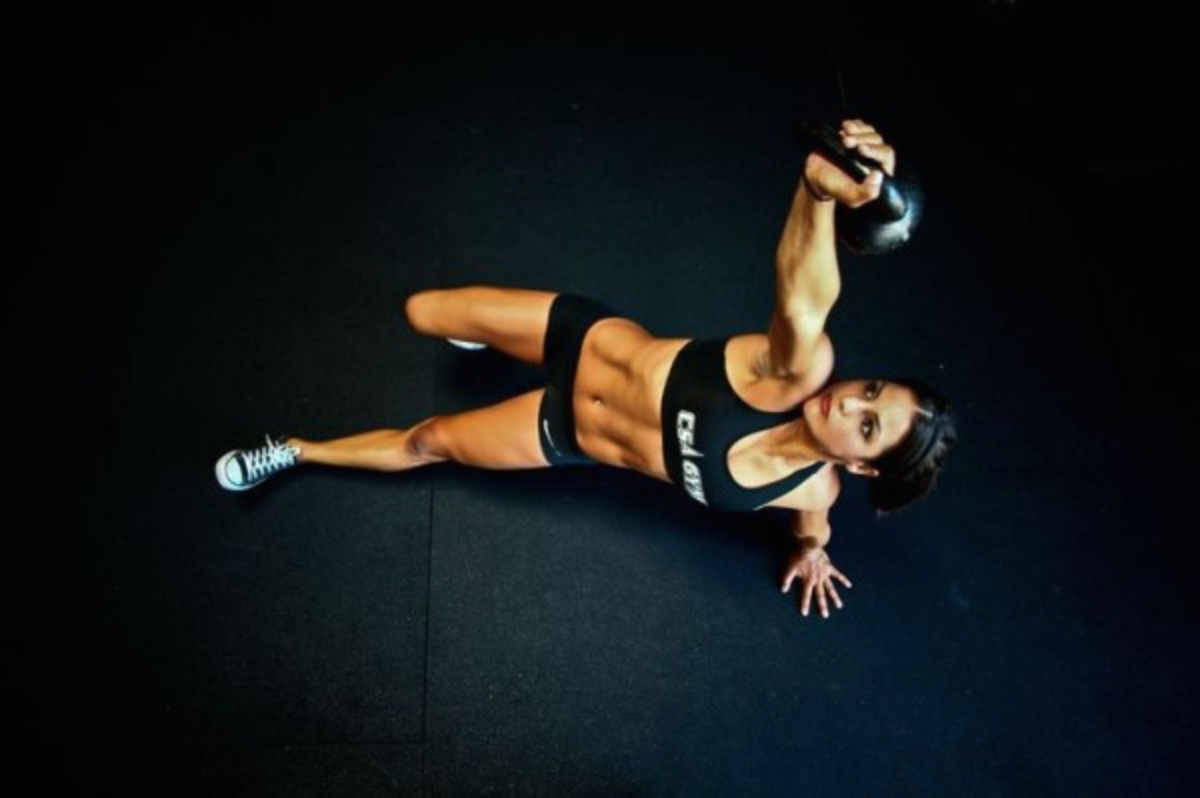3 Kettlebell Moves You Must Master

I was first introduce to the kettlebell a few years ago and at first I thought it was kind of lame. I didn’t think I would benefit much from them and I just felt goofy doing the movements. After a couple weeks of implementing them I began to feel a difference. I had more stability in my core as well as my glutes and hips. I had better flexibility and mobility in my shoulders, hips and ankles. I began to use them at home and realize the kettlebell is the perfect piece of equipment for an at home gym. It takes up minimal space and if done properly can produce some amazing results.
I do think it is worth noting that most of the videos or social media posts I have seen are not done with proper form. Like any form of exercise, if performed with bad form you are bound to get hurt. So please if you are going to start using kettlebells in your routine than take the time to learn proper form first.
Exercsie 1: The Swing
I have played around with the overhead swing, which the CrossFit world calls the “American Swing”. I am not going to bad mouth this style or anything but I prefer the Russian-style kettlebell swing where you project the kettlebell to shoulder height only. This is a very effective exercise when executed with proper form. Hip power, hip hinging, and breathing techniques make it incredibly powerful. This exercise has many benefits that combine strength, power, endurance, and work capacity.
The swing provides the powerhouse that will propel all of the other dynamic kettlebell movements. The full-body power that is required during the swing results in extreme fat loss and high levels of conditioning.
The swing is not as easy as it looks. It requires a precise ballistic movement that you must take time to learn. You must learn the swing before you move onto the snatch and the clean. Not doing the swing correctly can get you hurt but it is not the kettlebell’s fault, it is the person or the trainer’s fault. If done correctly, you should never get hurt.
The Take Home: The kettlebell swing is one of the best bang for the buck exercises out there. It is the foundation of kettlebell training. Taking the time to learn how to do it correctly will pay off immensely.
Exercise 2: The Goblet Squat
Unless you are new to exercise, I am sure you have heard of the goblet squat. The legendary coach, Dan John, should be credited with its popularity. The squat is one of the most fundamental movement patterns that we all need to improve and master.
Many people think that squats are only to build the legs and with a bar on your back but they are so much more. The goblet squat is the perfect tool to teach the squat pattern, improve hip mobility, build strength and muscle in the lower-body with heavier loads and improve conditioning with lower loads.
While the barbell squat may be king to build mass and strength, the goblet squat makes a nice addition to anyone’s program. The goblet squat can be used to improve the efficiency for any of the kettlebell exercises that you utilize.
Exercise 3: The Turkish Get-up
Unless you have been under a rock for the past few years, you probably have heard of the Turkish Get-up. Some physique and strength athletes shun them off since they don’t feel that they build muscle and strength. I’ve got news for you… they do! The get-up is best described as kalos sthenos, which is Greek for “beautiful strength”.
They may not be a traditional strength and muscle builder but there is more to an exercise than just building muscle and strength. An exercise like the Turkish get-up can be the perfect addition to your program to keep your core strong, shoulders safe and increase your proprioception.
This highly dynamic movement has a huge carryover to lifting heavy things. It does this with it’s series of movements where you go from lying down to standing up with a kettlebell or dumbbell without breaking form and keeping the bell from falling.
Here’s a short list of everything that we can get from a single get up:
-Single leg hip stability during the initial roll to press and during the bridge.
-Both closed and open chain shoulder stability.
-Shoulder mobility.
-Thoracic extension and rotation.
-Hip and leg mobility and active flexibility.
-Stability in two different leg patterns – lunge stance as well as squat stance.
-Both rotary and linear stability.
-The ability to link movement created in our extremities to the rest of our body.
source: the athletic build





You must be logged in to post a comment.